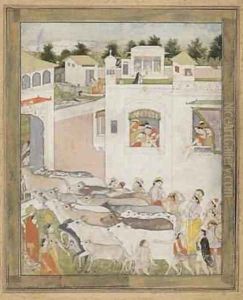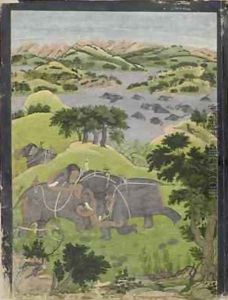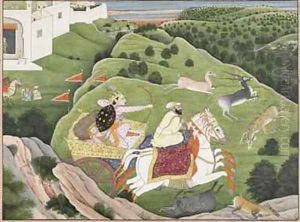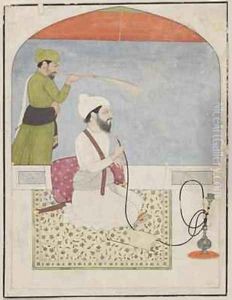Nainsukh Family Paintings
The Nainsukh family, originating in the small hill state of Guler in what is today Himachal Pradesh, India, played a pivotal role in the development of Pahari painting, a form of Indian miniature art. The family's legacy is predominantly associated with the genius of Nainsukh himself, who was born around the early 18th century into a family of court painters. His father, Pandit Seu, established the groundwork for what would become the distinctive style of the Guler school of painting, characterized by its naturalistic approach and delicate detailing. Nainsukh, whose name literally means 'delight of the eyes,' took these initial influences and elevated them through his own innovative vision and mastery of the miniature form.
Nainsukh's work is distinguished by its dynamic compositions, intricate brushwork, and vivid portrayal of courtly life. He moved from Guler to Jasrota, where he served under the patronage of Raja Balwant Singh, and it was here that Nainsukh's art flourished. His paintings often depicted the daily activities and ceremonies of the Jasrota court, imbuing them with a sense of realism and personal insight that was rare for the time. One of his most celebrated works is a series of paintings illustrating the life of Raja Balwant Singh, which showcases Nainsukh's skill in capturing the nuances of facial expressions and the subtleties of natural landscapes.
After Nainsukh, his sons and other family members continued the tradition of painting, contributing to the spread and evolution of the Pahari style across the region. Though the family's prominence faded towards the late 18th century, their influence on Indian art history remains significant. The Nainsukh family's legacy is preserved in collections across India and the world, offering insight into the cultural and artistic milieu of 18th century Northern India. Their work not only represents a peak in Pahari painting but also exemplifies the broader currents of Indian art, where regional styles were nurtured by patronage, familial lineage, and the cross-pollination of artistic ideas.



